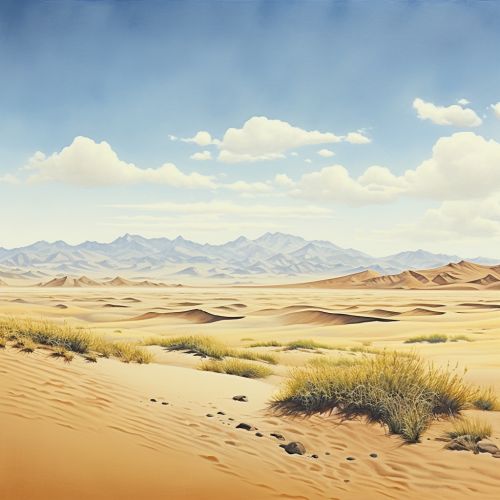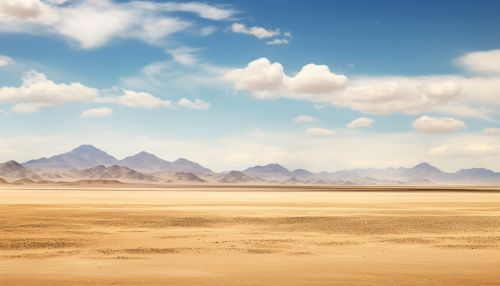Gobi Desert
Geography
The Gobi Desert is a vast, arid region in northern China and southern Mongolia. It is known for its dunes, mountains and rare animals such as snow leopards and Bactrian camels. The desert spans two countries and covers an area of 1.3 million square kilometers, making it the fifth largest desert in the world and Asia's second largest.


Climate
The Gobi is a cold desert, with frost and occasionally snow occurring on its dunes. Besides being far north and well inland, the Gobi is located on a plateau roughly 910–1,520 meters (2,990–4,990 ft) above sea level, which contributes to its low temperatures. An average of approximately 194 millimeters (7.6 in) of rain falls annually in the Gobi. Additional moisture reaches parts of the Gobi in winter as snow is blown by the wind from the Siberian Steppes.
Flora and Fauna
Despite harsh conditions, the Gobi Desert hosts a significant diversity of species. The desert is home to several important species, including the snow leopard, Bactrian camel, and Gobi bear – the only desert-inhabiting bear. The flora of the Gobi is adapted to the desert's harsh climate and includes several species of saxaul trees and shrubs, as well as various types of grasses and desert flowers.
History
The Gobi Desert has a rich history, with evidence of human habitation dating back several millennia. The region was part of the great Mongol Empire in the 13th and 14th centuries, and many important cities were located along the Silk Road, which passed through the Gobi. The desert also has a significant paleontological history, with many important dinosaur fossils having been discovered there.
Exploration and Research
The Gobi Desert has been a site of scientific exploration and research for many years. The desert's unique geology and paleontological significance have attracted scientists from around the world. The American explorer Roy Chapman Andrews led several expeditions to the Gobi in the 1920s and made significant dinosaur discoveries.
Economy
The Gobi Desert's economy is primarily based on mining and livestock herding. The desert has significant reserves of copper, gold, and coal, and mining operations in the Gobi have expanded rapidly in recent years. Livestock herding, particularly of goats for cashmere production, is another important economic activity.
Environmental Issues
The Gobi Desert faces several environmental challenges, including desertification, overgrazing, and mining impacts. Desertification is a particular concern, as the desert is expanding at an alarming rate due to a combination of overgrazing, climate change, and human activity. Mining operations in the Gobi have also been linked to significant environmental damage, including water scarcity and pollution.
